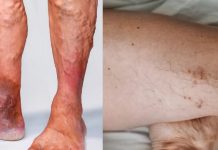Overview, Causes, & Risk Factors
Human immunodeficiency virus, or HIV, infection damages the body’s immune system. Over time, it leads to acquired immune deficiency syndrome, or AIDS.
What is going on in the body?
HIV affects the immune system in broad and devastating ways. Its main target is a special immune system cell called the CD4+ T lymphocyte. These cells help the body fight infections of all kinds. When HIV infects these cells, it decreases their numbers and affects how the cells that are left function.
After an adult is infected with HIV, he or she usually has no obvious symptoms for 5 to 10 years. During this time, however, the virus is slowly attacking the immune system. When the immune system is weakened enough, it becomes susceptible to other organisms that the body can usually fight off or keep under control. These other organisms include bacteria, other viruses, fungi, and parasites.
Many serious health problems occur as a result of the immune system damage caused by HIV. The most serious is AIDS.
What are the causes and risks of the disease?
HIV infection is caused by a type of virus known as a lentivirus. Seventy percent of HIV infections worldwide are sexually transmitted, or spread by sexual contact. The remaining 30% of the infections are spread in one of the following ways:
Following are some of the risk factors for HIV infections:
Symptoms & Signs
What are the signs and symptoms of the disease?
Following are some of the signs and symptoms of HIV infection:
People infected with HIV often have other infections because of their weakened immune system. These infections may include:
Diagnosis & Tests
How is the disease diagnosed?
The body produces antibodies to fight off HIV infection. HIV is usually diagnosed by blood tests called antibody titer tests. The enzyme immunoassay, or EIA, is used as a screening test. If this test is positive, a HIV Western blot test is done to confirm the diagnosis. The virus can also be detected by testing for viral proteins and by doing blood cultures. Other tests may be ordered to help diagnose complications of HIV infection, such as pneumonia.
Negative tests do not always mean that a person is free of infection. Weeks or months might pass after exposure to the virus before antibodies can be detected in the body.
Prevention & Expectations
What can be done to prevent the disease?
Although practicing safer sex cannot completely protect a person from HIV, it can lower the risk. Condoms help prevent passing along the virus. Research in laboratories has shown that a spermicide called nonoxynol-9 kills or stops the growth of HIV. However, there are not yet any studies that prove spermicides prevent HIV infection in humans. Some experts do believe that using spermicide on a condom or putting it into the vagina can kill some HIV organisms before they can infect the woman. It is safest to avoid sexual intercourse with people who have HIV infection or unknown HIV status and those who use IV drugs.
A person should not share needles, syringes, or other drug paraphernalia that could carry tainted blood or body fluids with anyone. When caring for someone in an emergency, it is important to wear gloves to protect against HIV in body secretions.
A woman who is pregnant or thinking about getting pregnant, should ask her doctor to test her for HIV. If a woman has HIV, steps can be taken during pregnancy and birth to avoid passing it to her baby.
What are the long-term effects of the disease?
HIV causes many long-term effects, including:
What are the risks to others?
Having unprotected sexual intercourse or sharing needles or syringes puts a person and his or her partners at risk for HIV.People with known or suspected HIV infection should not donate the following:
Treatment & Monitoring
What are the treatments for the disease?
There are a number of medicines that effectively treat HIV. Over the past few years, combinations of certain drugs have been very promising in controlling HIV. Some of them are as follows:
People who have HIV infection face significant health problems and stress. Following are some helpful interventions:
What are the side effects of the treatments?
Unfortunately, most HIV medicines have many side effects, depending on the drug being taken. Some more common side effects include:
Some less common side effects are as follows:
What happens after treatment for the disease?
There is no cure for HIV infection at this time. The goal of treatment is to keep the virus under control with the hope of preventing further immune damage. Currently, a person must be treated for life.
How is the disease monitored?
Someone with HIV infection will have regular visits with the healthcare provider, along with periodic blood tests. Any new or worsening symptoms should be reported to the provider.
Article type: xmedgeneral














































